Admission to Venice | The specific plans are as follows: Starting in 2025, tourists will be able to visit the world-famous city on the Italian Adriatic Sea on 54 days a year on which they pay an entrance fee. However, this only applies to day visitors who do not stay overnight in the city. The entrance fee is comparable to a visitor’s tax. Experienced travelers already pay visitor’s tax at the North and Baltic Sea resorts or a tourist tax in Mallorca. So it’s no surprise.
Guests who are exempt from the entry fee, see entry ticket, must also submit a corresponding request on the website.
More information about this new regulation is now available here on my blog.
Status: 14.02.2025
- Entry for day visitors only on the following dates in 2025:
- April 18 (Good Friday) – May 4, 2025
- May, June, July – Every weekend and also on Fridays
- Applies to stays between 8:30 a.m. and 4:00 p.m.
- Fee remains at €5.00 for bookings made up to 4 days before the start of the visit. For reservations made within 3 days before the visit, the entrance fee increases to €10.00.
- Children and young people under 15 years of age travel for free, but must still carry proof of age with them!
| April 18 (Good Friday) to May 4, 2025 |
| May 9 to 11, Friday, Saturday and Sunday |
| May 16 to 18, Friday, Saturday and Sunday |
| May 23 to 25, Friday, Saturday and Sunday |
| May 30 to June 1, Friday, Saturday and Sunday |
| June 2, Monday - National holiday |
| June 6 to 8, Friday, Saturday and Sunday |
| June 13 to 15, Friday, Saturday and Sunday |
| June 20 to 22, Friday, Saturday and Sunday |
| June 27 to 29, Friday, Saturday and Sunday |
| July 4 to 6, Friday, Saturday and Sunday |
| July 11 to 13, Friday, Saturday and Sunday |
| July 18 to 20, Friday, Saturday and Sunday |
| July 25 to 27, Friday, Saturday and Sunday |



On the days when the access fee is due, special desks will be set up on the forecourt of Santa Lucia station where you can make your payment. You can also use the Venezia Unica vending machines. The entrance fee can also be paid at participating FIT tobacconists. At present, the only way to apply for an exemption is online via the following portal: cda.veneziaunica.it/en/exemptions



✅ THIS PAGE IS CONSTANTLY BEING UPDATED. MORE DETAILS ARE EXPECTED IN THE NEXT WEEKS
From when does admission have to be paid?
As the city government announced, after a few test runs, the general entrance fee in 2024 will be followed by 54 days in 2025 (see above for dates). The dream city near the beaches of the Adriatic is a popular tourist destination in Italy, especially for short city breaks and day trips (80% of all tourists) from all over Italy or people passing through on their way to various destinations on the boot in the Mediterranean.
Above all, the number of cruise ship tourists has increased dramatically. Venice is now inundated with cruise ship tourists.
Why do you have to pay the entrance fee in Venice?
Venice has always been a magnet for tourists from all over the world. Among other things, this fantastic city has been exposed to a steadily growing influx of tourists for years, due to low-cost airlines and cruise ships. On the one hand, the city would like to keep the hordes of visitors at bay, but on the other hand, tourism remains the main source of income for the city on the Adriatic.
All this naturally leaves its mark, which one tries to alleviate with the income from the entrance fee.
How much is the entrance fee to Venice?
The entrance fee for Venice remains at €5.00 for bookings made up to 4 days before the start of the visit. For reservations made within 3 days before the visit, the entrance fee increases to €10.00. Children under 15 years of age have free access. The pricing is subject to change until further notice. Appropriate changes will be announced.
Who has to pay for admission?

The new entry fee will affect day tourists and cruisers on their usual shore leave. A day trip to Venice, a romantic gondola ride on the Grand Canal, a quick photo with the pigeons on St. Mark’s Square or a stroll across the Rialto Bridge – these experiences will then become more expensive.
Who does not have to pay for admission?
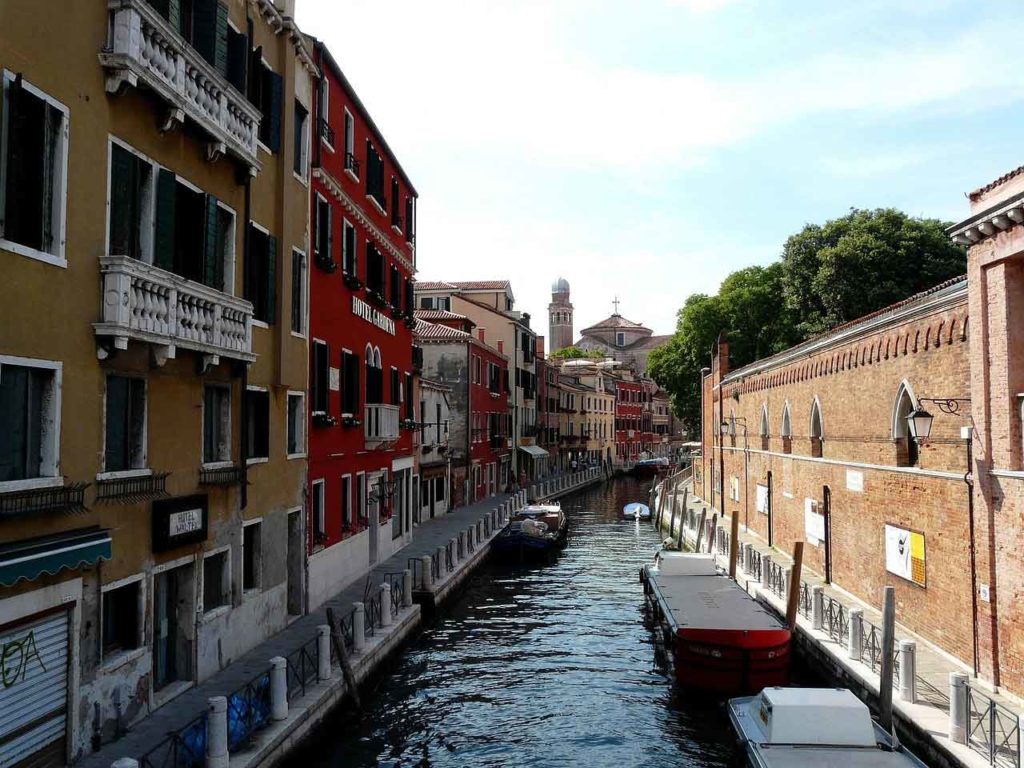
You can only get a view of the gondolas if you pay an entrance fee! However, this only applies to day visitors. If you have booked a hotel in Venice and are staying overnight, you will already have paid a bed tax (photo of Hotel Gardena, near the train station – red building). The tax ranges from one to five euros per night.
The rate depends mainly on the season and the classification of the accommodation. Children up to 10 years of age and some groups of people are exempt, for example bus drivers. Therefore, no additional entry fee will be charged to overnight guests for visiting Venice.
Residents are also exempt from the entrance fee, as are commuters, students, family members, children under 15 years of age and people with disabilities.
How is the entrance fee charged?
As mentioned above, admission is charged at kiosks in the city and online at https://cda.ve.it. Visitors then receive a QR code that they must show upon request.
This part of my article is also constantly being updated.
Status: 14.02.2025
More information will follow here as well!
Penalties for evasion of the entrance fee
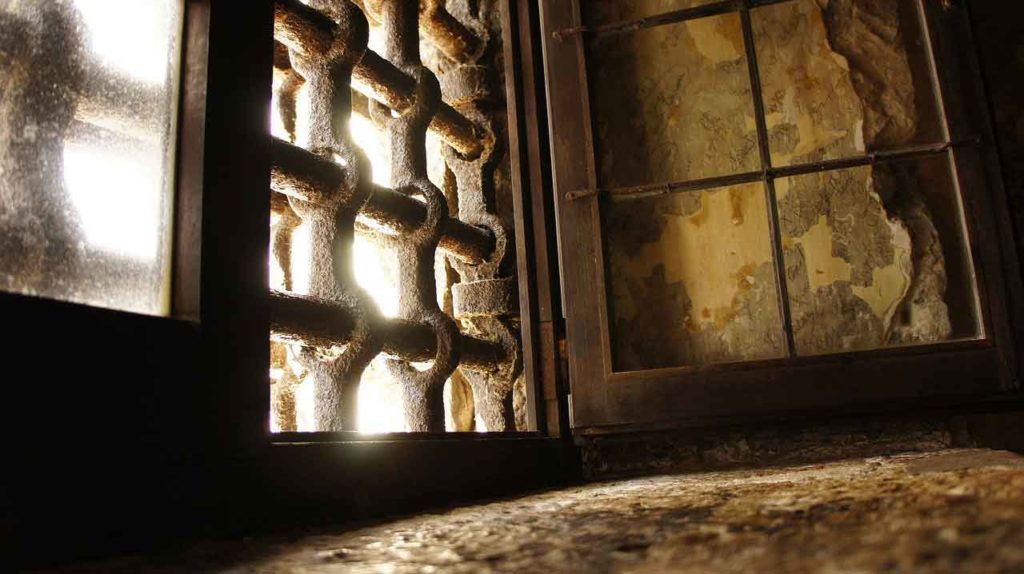
We do not expect many compromises here. Entrance fees of this kind only make sense if they are paid by all participants, if there are controls and if evasion of the fee is penalized accordingly. According to the city, the fine can be as high as €300.
So if you are planning a day trip to Venice from January 2025, you should definitely include the entrance fee to the historic center of the lagoon city in your vacation budget. But surely you don’t have to go to the prison of the Doge’s Palace (photo above)!
How do you get to Venice?
It will not be possible for individual travelers to avoid paying the entrance fee. Venice is completely car-free and public transport is only available on the waterways of the lagoon city. Whether by train, bus or car, from Santa Lucia train station or Piazzale Roma bus station, the only way to continue is on foot or by canal boat.
All other connections to Venice and the small lagoon islands are only possible by water.
This applies to transfers from the airport terminal by water, from Punta Sabbioni or Chioggia.
Should one now renounce visiting Venice?
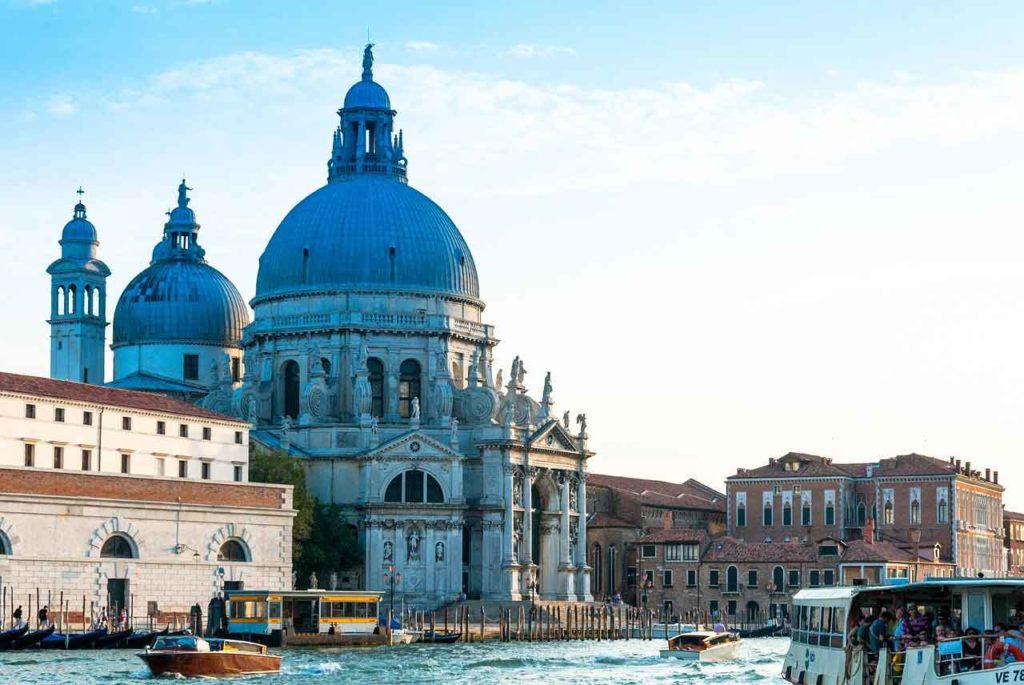
All year round, the Italian city on the Adriatic Sea with its numerous canals is worth a short holiday for millions of visitors. Many of them are day tourists who only have to pay the fee once. Venice remains the city of romantics, culture lovers, and connoisseurs. Strolling through the alleyways of the old town and a delicious ‘gelato’ is definitely worth the entrance fee.
✅ Tip: Those who at the end of the text take to heart 2 or 3 of my saving tips during a day excursion to Venice will quickly recover the costs for the entrance fee.
What is the entrance fee in Venice used for?
In the official language of Venice, the entrance fee is also called ‘Contributo di sbarco’, which means as much as – the fee for going from the board -. Especially the booming cruise tourism is a big problem for the city and its inhabitants.
Every year, hundreds of cruise liners make a stop in the harbor of Venice. Cruise ships dock early in the morning so that millions of passengers can explore the fabulous Venice. The sightseeing is quickly removed and after a few hours, the cruise ships return to the all-inclusive onboard. There is hardly any money left in the city to keep Venice clean.
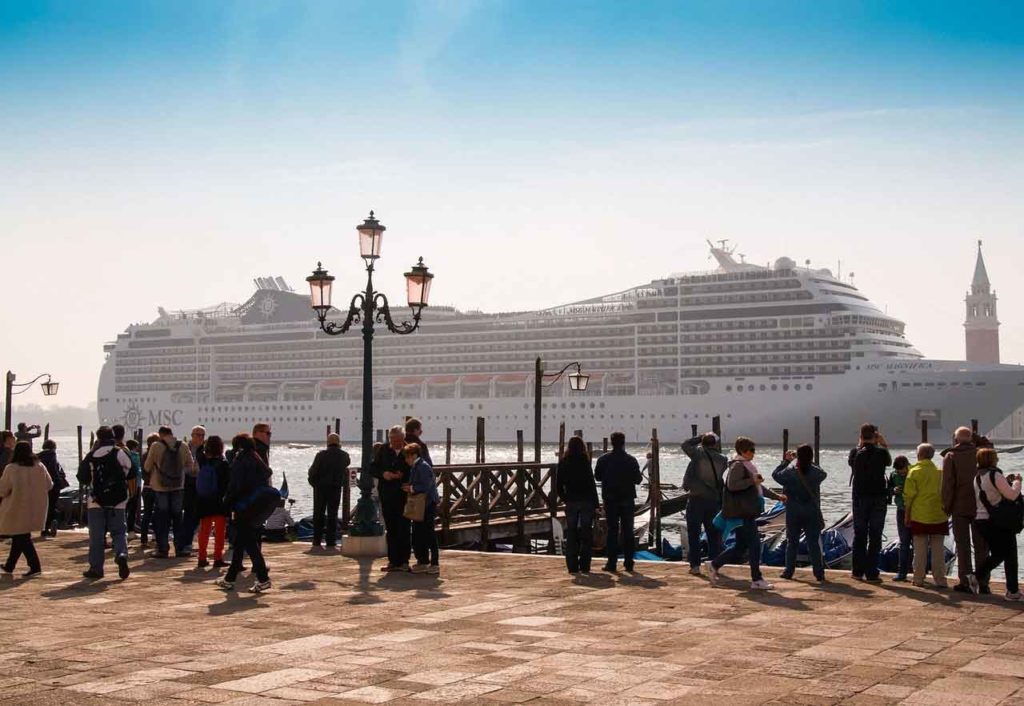
It is also officially not the plan with the entrance fee to fill the state treasury but to do the expensive work for the maintenance and the permanent cleaning of the historic old town. Also, the expensive waste disposal has to be financed in order to continue to guarantee a ‘Dolce Vita’ for tourists and locals.
Especially in summer, many sun-seekers spend their holidays on the popular beaches of the Adriatic, for example in and around the seaside resort Lido di Jesolo. A day trip to Venice should not be missing. Also with numerous water buses, it goes then from the nearby ferry port Punta Sabbioni in about 30 minutes directly to a pier near St. Mark’s Square with its famous Doge’s Palace and St. Mark’s Cathedral.
Equipped with drinks and sufficient food, little money remains in the city and therefore the city treasury often does not see a single cent. Nevertheless, the city administration is responsible for the preservation, the expensive renovation of historic buildings, and also for the removal of garbage.
Evaluation of the entrance fee
Travel is often cheap and many tourist strongholds and their inhabitants pay high prices. More than 30 million people are attracted to Venice every year. Any attempt to regulate the gigantic stream of visitors is understandable.
No one is prevented from experiencing Venice and its myth, whether in the cooler or warmer seasons. Venice must keep control of mass tourism and its consequences. Sometimes this has its price!
Practical saving tips for the day trip to Venice
Those who want to see the gondolas have to pay the entrance fee now…
The additional costs of 3,00 to 10,00 € per day and the person you will have saved quickly again if you follow one of my saving tips.
Savings tip 1 – Parking in Mestre
Those who want to park their car during their day trip to Venice as close as possible to the historical center of the city have to park their car in the multi-story car park Tronchetto (from 21,00 €) or in the car parks at the Piazzale Roma (approximately 30,00 €). From Piazzale Roma, you can get directly into the city center, from the parking garage Tronchetto it is at least a 15-minute walk to the first gondola. Those who use the ‘People Mover’, a driverless high funicular that connects the parking garage Tronchetto and Piazzale Roma, pay 1,50 € per stretch and person. It is cheaper to park at the station in Mestre.
A top tip is the parking garage Via Ca’ Marcello (3,00 € / hour), then 200 meters walk to the station. Trains to Venice depart every 5 to 10 minutes, travel time maximum of 10 minutes, and costs approx. 1.50 per person and route. From the Santa Lucia train station, you can go directly to the adventure Venice. Without much extra time, you can easily save 15,00 €, more than the entrance fee.
Savings tip 2 – Save on Vaporetti
One should not overestimate the size of the historical old town of Venice. Everything can be easily explored on foot. From Piazzale Roma to Piazza San Marco, it is about a 30-minute walk.
A detour through the authentic Cannaregio district takes about 1 hour. Single tickets with public water buses are quite expensive with 9,50 €. High savings potential.
Saving tip 3 – Traghetto instead of a gondola
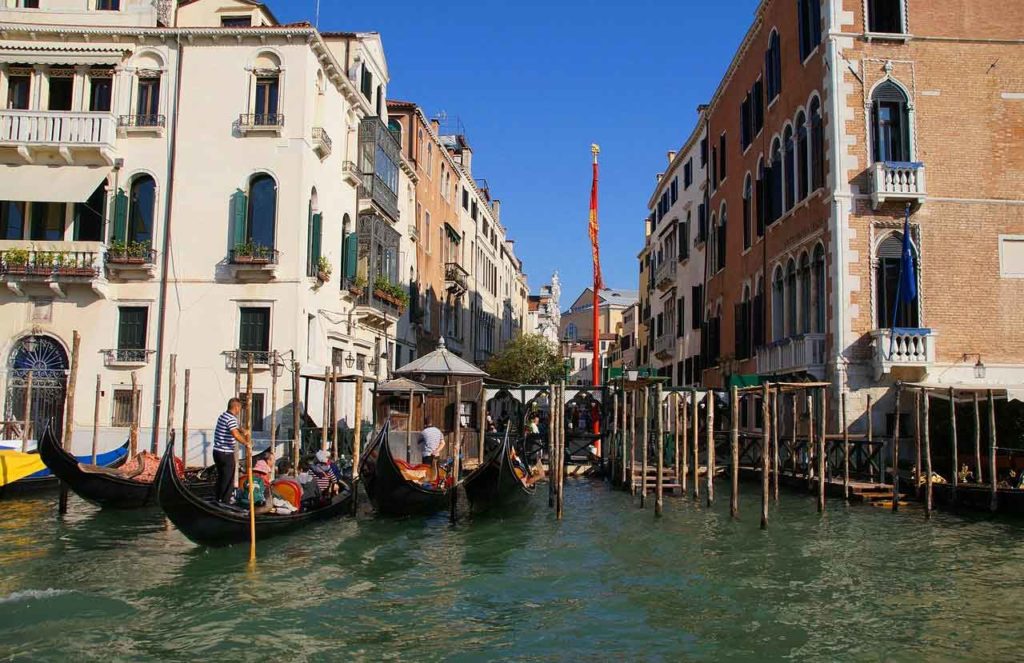
Alone or in a small group, a gondola trip in Venice is always an expensive pleasure (approximately 30,00 to 100,00 €). But those who are satisfied with a short gondola experience or those who are only looking for it for the obligatory photo can cross Canal Grande with a gondola ferry instead of crossing one of its four bridges.
These ‘Traghettos’ depart from numerous shores and are rowed by two gondoliers. The crossing takes about 2 to 3 minutes and costs approximately 3,00 € per person. Only a short trial trip, but a lot of money was saved.
Saving tip 4 – Tap water instead of expensive plastic bottle
Sightseeing tours make you thirsty and from May to September it can be very hot in Venice. Drinking a lot is important, especially for children. Street vendors often offer water bottles at far-inflated prices.
At many public water places, one sees numerous tourists who fill their plastic bottles with refreshing water for free. The water is of good quality and can be drunk without hesitation. Thus, get a drinking bottle and save money. One can also save money during the meal or the visit to a restaurant. Some hints for this are also available in Culinary Venice.
The classic among the general saving tips for Venice remains, of course, the cheap accommodation. Those who are willing to abstain from the evening flair of the old alleyways of the gorgeous lagoon city during an overnight stay in a hotel should have a look at my hotel recommendations outside the center.

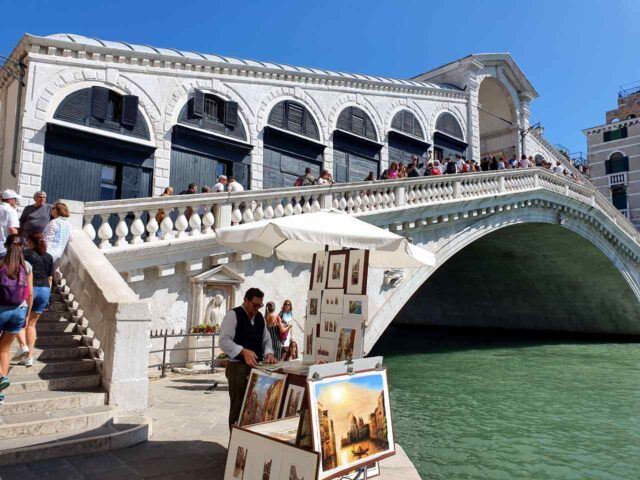






[…] of ticketing and entry fees to the city – the introduction of which has repeatedly been delayed, however. In the end, committee members were swayed by the idea that changes were about to be […]
[…] of ticketing and entry fees to the city – the introduction of which has repeatedly been delayed, however. In the end, committee members were swayed by the idea that changes were about to be […]
[…] of ticketing and entry fees to the city – the introduction of which has repeatedly been delayed, however. In the end, committee members were swayed by the idea that changes were about to be […]